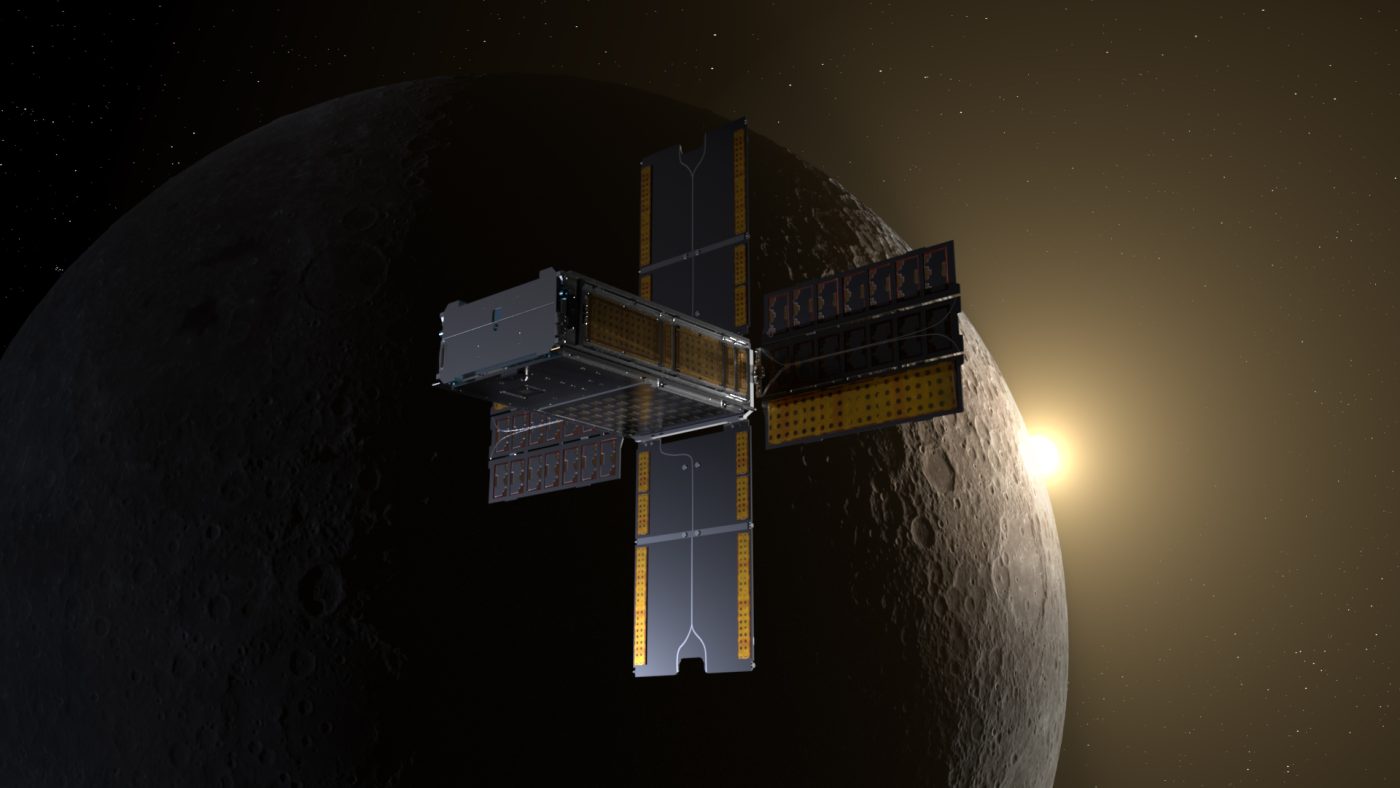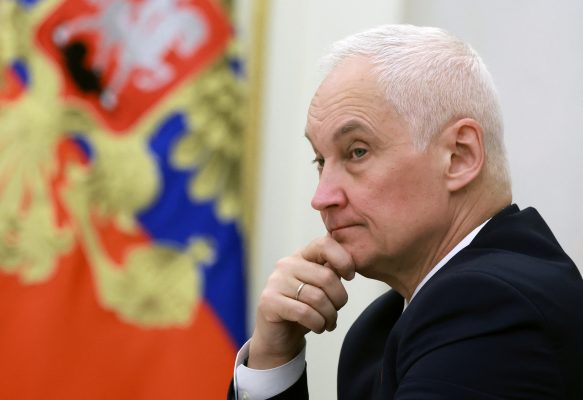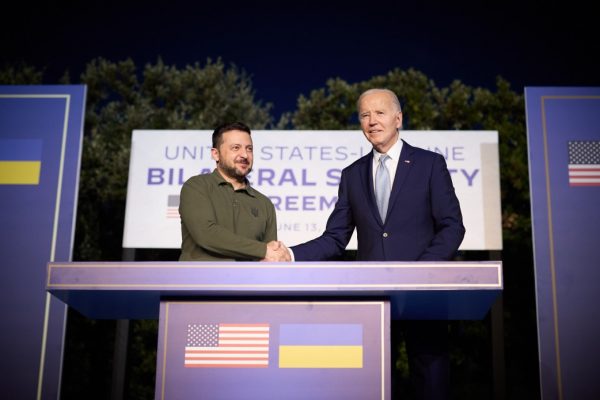The enormous potential of the new era in space, using spacecraft of complexity once only accessible by a handful of governments, will only be achievable if humanity avoids destabilizing military confrontations along the final frontier. Worryingly, there are multiple signs that the Russian regime does not see it this way.
Putin’s Russia has for years undermined this safe and sustainable approach for humanity’s shared future off-planet. Just this week, the Pentagon made a remarkable public statement that the Russian military had successfully “launched a satellite into low-Earth orbit that we assess is likely a counter-space weapon, presumably capable of attacking other satellites in low-Earth orbit.” The US has said the device is in the “same orbit” as a US reconnaissance satellite, likely stalking it.
While Putin’s officials denied the Pentagon’s allegation, there remains little reason to doubt the broad assessment of the US intelligence community, given an increasingly reckless string of actions taken by the Russian Federation in low-Earth orbit for several years.
These include the dramatic direct-ascent anti-satellite weapons test that Russia’s military conducted against its own defunct Soviet-era signals intelligence satellite in November 2021, just weeks before its large-scale invasion of Ukraine. That incident created a large field of space debris, which not only threatened the safety of US and EU personnel — and Russia’s own cosmonauts — aboard the International Space Station (ISS), but continues to endanger satellites in low-Earth orbit to this day.
Add to this multiple warnings from the Biden administration that Putin’s military has been developing a nuclear-capable, space-based anti-satellite weapons system, which would represent a dangerous violation of the 1967 Outer Space Treaty (OST).
So what exactly has Russia been doing? Reports indicate that US Space Command has confirmed the launch of the potential Russian space weapon — designated as Kosmos-2576 — took place on May 16 aboard a Soyuz 2.1b rocket from the Plestesk Cosmodrome near the White Sea, along with other satellites purportedly for civilian applications. Kosmos-2576 is reportedly of the Nivelir-L class, a relatively new Russian space system capable of so-called proximity operations to “inspect” other satellites from a distance, and also able to deploy separate space vehicles nested inside the main vehicle for a variety of purposes.
And what of the US statement that Kosmos-2576 is in the “same orbit” as a US satellite — USA-314, reportedly a National Reconnaissance Office intelligence platform? So far, open-source data analysis doesn’t back this claim. According to Dr. Jonathan McDowell of the Harvard-Smithsonian Center for Astrophysics, Kosmos-2576 and USA-314 are in fact in the same “orbital plane” rather than orbital path, and that as of May 22 “the closest approaches the two satellites make are at a distance of several hundred kilometers.” He did however add that he does “expect Kosmos-2576 to make orbital changes that will reduce that distance.”
Clarifications like these (from an authority referred to as “orbital police” no less) are important in an area of national security where technical precision is key.
It will take time to assess the weapons capability described by US officials, especially in a domain where the understanding of intent requires precise monitoring and analysis even under the most straightforward of conditions.
McDowell has pointed out that as of May 22, Kosmos-2576 has so far seemed “…to be similar to other Nivelir-L ‘inspector satellites,” which have shadowed US satellites at a large distance, but have not interfered with them,” adding, that so far he is “highly skeptical of the suggestion that it is an anti-satellite weapon.”
Still, it’s too early to dismiss the US. intelligence community assessment — which is likely based on clandestine sources in addition to the physically observable. For example, a satellite equipped with a sub-payload for malign activity would not be immediately apparent until it attacked another spacecraft.
It’s also possible that we will never know, since the quick — if verbally imprecise — accusation by the Pentagon may deter Russia from using the vehicle for nefarious purposes. After all, the Biden administration has previously used forward-leaning intelligence releases to great effect to deter some of Russia’s malign activities and defuse disinformation campaigns. And regardless, the platform is still at a minimum designed to support Russia’s adversarial military objectives against Western democracies by performing proximity observations to spy on Western satellites from orbit.
What can the democratic world do? For starters, this latest incident underscores the urgency to press ahead with urgent action to ensure a safe and sustainable future in outer space.
It’s fair to say that forming a shared international understanding on this issue has been challenging. The security of outer space is the aim of several international agreements, centered on the OST, which prohibits the stationing of weapons of mass destruction in Earth’s orbit or elsewhere in space.
However, the imperfections and outdated nature of this agreement, as its failure to mention conventional weapons in space, are widely understood to mean changes are needed. As such, all attempts to regulate space governance will be challenged until a clear definition of a “space weapon” is enshrined in international law (this too has been a part of the expert community debate over the likely nature of Kosmos-2576.)
While the OST lacks this terminology altogether, the proposed 2014 Prevention of An Arms Race in Outer Space (PAROS) treaty seeks to define a space weapon as “any outer space object or component thereof which has been produced or converted to destroy, damage or disrupt the normal functioning of objects in outer space, on the Earth’s surface or in its atmosphere.”
This may seem straightforward, but it isn’t. Any unmanned spacecraft designed for rendezvous and proximity operations may fall within this catchall since it can be redirected to collide with an adversary’s satellite.
Furthermore, several states, including the United States, Russia, and China, possess technologies for active debris removal (ADR) or on-orbit servicing (OOS), primarily intended for intercepting space debris objects and maintenance operations for existing space infrastructure.
It is evident that any system able to gather and deorbit a chunk of space debris could also do the same to an active satellite. One country’s space garbage truck could be another’s space weapon. In other words, these are potential dual-use systems. They will need well-defined regulatory mechanisms for operations monitoring to have any chance of inspiring mutual trust among nations.
Strict prohibitions against the deployment of nuclear-powered or otherwise nuclear-capable anti-satellite weapon systems, including greater detail than is currently described in the OST, are vital. While we often envision the devastation that would be caused by the detonation of a nuclear weapon on Earth, nuclear weapons use in space would also be immense destructive — capable of disabling multiple satellites via the electromagnetic pulse (EMP) associated with a nuclear detonation.
Beyond a potential orbital nuclear EMP weapon, it is possible that Russia could focus its efforts on developing high-powered lasers or microwave systems capable of inflicting permanent damage to sophisticated electronic microchips and sensors both on space-based assets and terrestrial sites. It might also employ nuclear-powered jamming devices to disrupt or intercept the operations of communication networks now being used to assist Ukraine in coordinating its forces and tracking Russian troop movements.
There is some good news though. Russia’s economic situation may make costly space developments unaffordable. Even though Moscow has rechanneled its economic efforts to the buildup of an industrial military complex, the allocation of funds to the ambitious Federal Space Program 2016-2025 is expected to shrink over the next few years. Funds are not limitless — for example, it is clear Russia struggles to provide air defenses to regions like Kursk and Belgorod, as well as to ensure the protection of state-owned oil refineries being targeted by Ukrainian drones.
The West also has a say in this. Russia’s ability to successfully develop destabilizing space weapons can be delayed and disrupted.
Enhanced sanctions and export controls — with robust enforcement — can help the US and its allies to significantly degrade Russia’s space sector. As with supporting Ukraine and deterring Putin’s global malfeasance, Western leaders must show the political will to use their wide array of economic statecraft measures to bring a reckless rogue state to heel, something that can usefully also make Russia the world’s first former space superpower.
Viktoriia Skoropadska attends the University of Regensburg and is part of the Transatlantic Defense and Security program at the Center for European Policy Analysis (CEPA.)
Dr. Benjamin L. Schmitt is a Senior Fellow at the Department of Physics and Astronomy and the Kleinman Center for Energy Policy at the University of Pennsylvania, a Senior Fellow for Democratic Resilience at the Center for European Policy Analysis, a fellow of the Duke University “Rethinking Diplomacy” Program, and a Term Member of the Council on Foreign Relations. (Twitter: @BLSchmitt).
Europe’s Edge is CEPA’s online journal covering critical topics on the foreign policy docket across Europe and North America. All opinions are those of the author and do not necessarily represent the position or views of the institutions they represent or the Center for European Policy Analysis.





